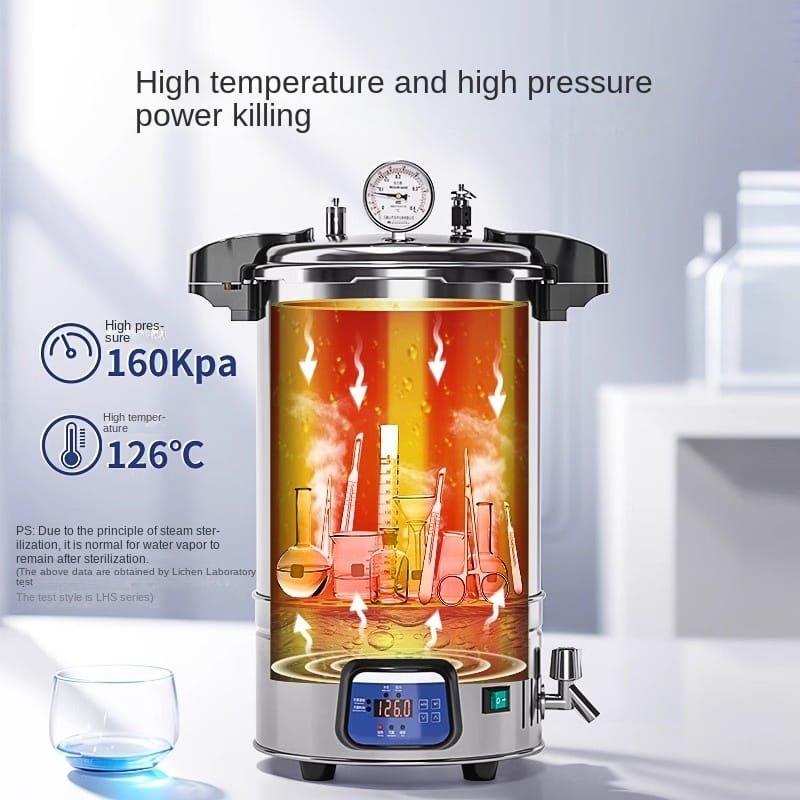
Appropriate PPE should be worn during autoclave use to protect against burns, steam exposure and chemical spills.
Heat-Resistant Gloves protect your hands against burns during autoclave door operation and handling hot materials.
Safety goggles prevent injuries to your eyes by blocking steam and possible liquid splashes.
A lab coat helps safeguard your body against potential spills and burn hazards.
Closed-Toe Shoes protect against injuries caused by falling objects or spills.
Perform these checks before you start the autoclave to guarantee safe operation.
Examine the door seal and verify that the gasket remains whole and shows no signs of damage or cracks.
Pour distilled water into the reservoir until it reaches the manufacturer’s suggested level.
Check that both the pressure and temperature gauges are operating properly.
Make sure no debris or previous cycle remnants remain inside the autoclave chamber.
During loading, arrange items so steam can move without obstruction. Avoid overloading the chamber.
Select containers that are approved for autoclave use such as bags and trays.
Keep container lids ajar or choose vented containers to avoid dangerous pressure surges.
Remain on site throughout the operational cycle to quickly handle any arising problems.
The door should remain closed until the pressure gauge indicates no remaining pressure.
Heat-resistant gloves are necessary when removing items because they will be intensely hot.
Proper waste disposal requires adherence to your facility’s waste disposal guidelines.
Adherence to autoclave safety guidelines plays a critical role in accident prevention and achieving successful sterilization. Users maintain safety in their working environment by wearing suitable PPE along with performing pre-operation checks and careful item handling to reduce risks. Always prioritize safety when operating an autoclave.
Open the autoclave door only after both the pressure gauge displays zero and the chamber’s temperature reaches a safe level. If the door remains closed after ensuring the pressure gauge reads zero and the temperature has dropped then seek help from a technician.
Sharp objects require storage inside puncture-resistant containers during autoclave operations to avoid injuries.
When an autoclave is overloaded the steam circulation becomes inadequate which results in sterilization failure. Always follow the manufacturer’s loading guidelines.
During autoclaving of liquids you must use appropriate containers and keep them partially open to avoid pressure build up.
Switch off the autoclave as soon as possible and reach out to a technician to arrange repairs. Using a leaking autoclave poses safety risks and must be avoided.
The article delivers an in-depth safety guide for autoclave operation that helps users work with the equipment safely and with confidence. Please notify me if you want to continue with the next article.
Why Autoclave Is The Best Method Of Sterilization